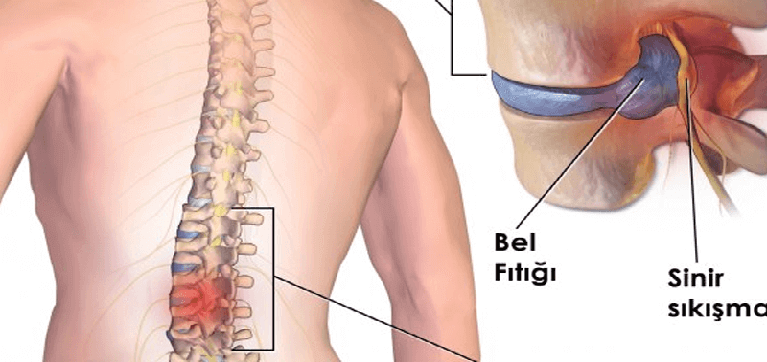
Lumbar Hernia
The proportion of people who experience severe low back pain at least once in a lifetime is 75-85%. Low back pain is the most important cause of disability in people under the age of 45, In individuals over 45 years of age, it ranks 3rd in this respect. It is the most common reason for referral to primary care physicians in the adult population. Industrialized, i.e. developed It is reported to be more common in developed countries than in less developed countries. Although the reason for this continues to be debated, it is believed that the level of prosperity makes people lazier, more sedentary, more desk-based work, more time spent in a certain position or sitting It can be said that muscle weakness occurs and loss of flexibility develops.
However, in order for the tissues of the musculoskeletal system to be healthy, certain loads and movements must be performed, and a certain muscle strength and flexibility must be present. Every tissue in our body needs to fulfill the task assigned to it in order to maintain its vitality and healthy structure. Just as an eye that has been closed for too long vision decreases, stomach function is impaired during prolonged fasting, or kidney function is impaired if kidney function is adversely affected by insufficient water intake. Without loading and maintaining muscle strength, the musculoskeletal system will be negatively affected and more prone to illness.
In herniated discs, leg pain is more common than low back pain. Depending on the degree of the hernia, pain starting from inside the hip and radiating to one or both legs, numbness, In more advanced phytic hernias, there may be complaints of loss of strength in the legs, urinary or bladder incontinence. With the physician's examination and today's advanced technology In addition, magnetic resonance imaging (MRI) can be used to diagnose and determine the degree of lumbar disc herniation.
Is surgery the treatment for every lumbar disc herniation?
Depending on the degree of the hernia and the patient's complaints, non-surgical treatment is also possible. In initial lumbar herniated discs, mild pain usually radiating to the lower back and leg is common. Patients can usually get rid of this pain with painkillers and muscle relaxants and a few days of rest. Again, in mild-moderate hernias, low back and Initially, medication and physical therapy applications under the supervision of a physical therapist can be tried for the control of leg pain, but sometimes moderate patients may not benefit from medications and physical therapy. If no benefit is seen with medications and physical therapy applications, facet or foraminal A simple injection into the lumbar joint and around the nerve, which we call an injection, provides relief in the majority of these patients. Statistical data of lumbar disc herniation patients only 3% of patients require surgery. When deciding on surgery for lumbar disc herniation, the decision is made based on the patient's MRI image, examination findings and complaints. An approach such as “Your herniated disc is very large and definitely needs surgery” or on the contrary “Your herniated disc is small and you do not need surgery right now” is wrong by only looking at the MRI. There are patients who have a very large hernia on MRI but have mild pain and benefit from non-surgical treatments, as well as patients who have a small or moderate hernia on MRI. There are patients who do not benefit from any non-surgical treatments. When deciding on surgery in lumbar disc herniation, the most important thing is the patient's current complaints and examination. findings.
Endoskopik lomber diskektomi:
If severe pain and neurologic symptoms cannot be controlled with medication or physical therapy, surgical intervention will be necessary. The purpose of a discectomy is to extrude is to remove the disc tissue and open or completely release the pinched nerve.
This procedure does not require a large incision or opening of the spinal cord. It is therefore a tissue-sparing alternative to traditional “open” surgery. Virtually tissue destruction The complete healing process is fast and the recovery time is much shorter.
For information and treatment, you can contact Associate Professor Dr. Ali Yilmaz here.